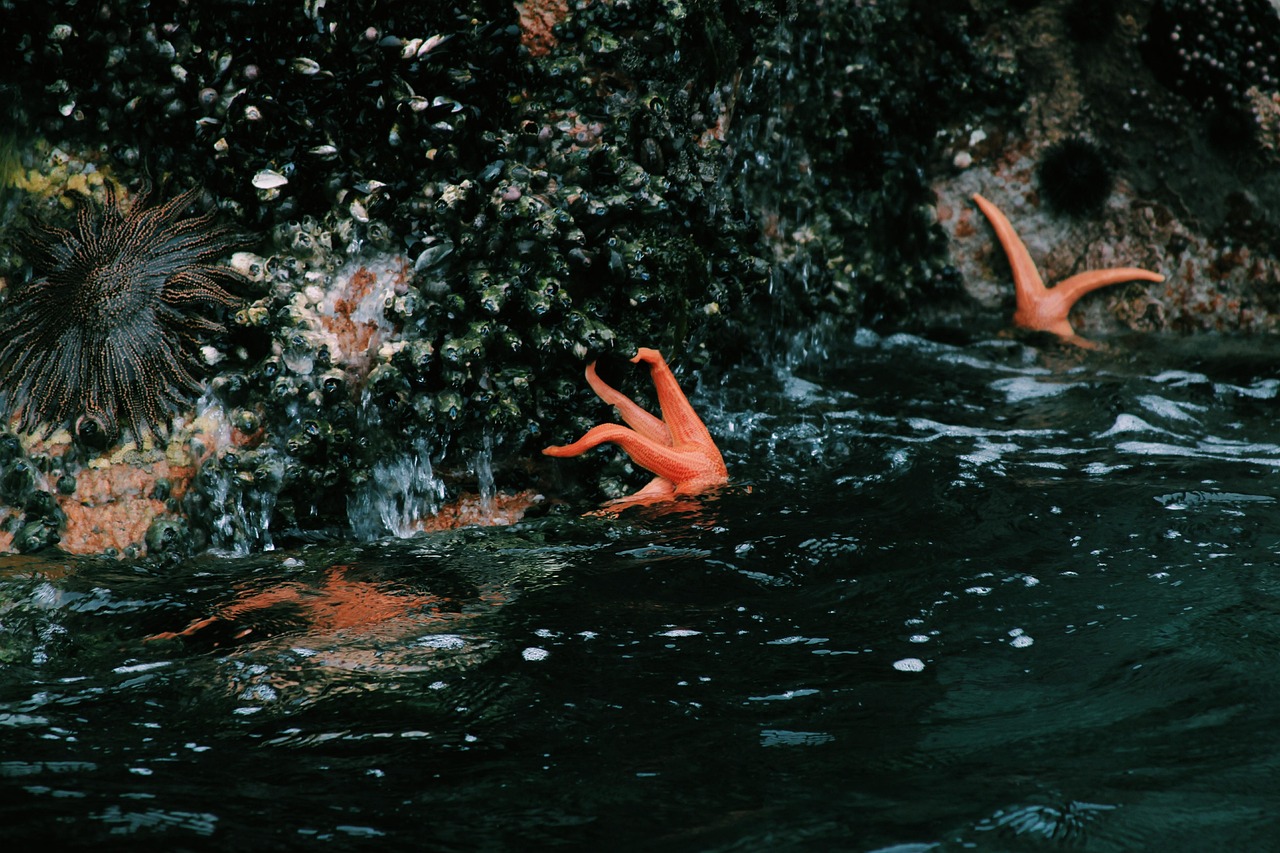Photo by alexlesho17
After years of scientific investigation, researchers have finally identified the cause behind one of the largest marine mass mortalities on record—a bacterial pathogen that has killed more than 6 billion sea stars along the Pacific coast since 2013.
A team of West Coast researchers published their breakthrough findings in Nature Ecology & Evolution, revealing that Vibrio pectenicida, a type of bacteria previously known only as a pathogen in shellfish larvae, is responsible for the devastating sea star wasting disease.
Gruesome death and ecosystem collapse
The disease causes a horrific death for affected sea stars. Alyssa Gehman, a marine disease ecologist at the Hakai Institute and senior author of the study, described the grisly process: “Their arms kind of twist back on themselves, so they get kind of into puzzle pieces. Their arms will sort of walk away from their bodies.”
Lesions then form and the sea stars dissolve into what Sara Hamilton, science coordinator for the Oregon Kelp Alliance, called “fields and fields of puddles of dying sea star goo. It was like something out of a horror movie.”
Sunflower stars hardest hit
The disease has affected 26 species, but sunflower sea stars—which can grow up to 3 feet across and sprout 24 arms—were hardest hit. More than 87% of sunflower sea stars in northern parts of the west coast have been killed, while in southern habitat ranges, the species is considered functionally extinct.
Melanie Prentice, a research scientist at the Hakai Institute, told CBC News: “The agent is a bacteria. It’s called Vibrio pectenicida.”
Years of scientific detective work
The breakthrough came after years of painstaking laboratory work. Scientists conducted seven controlled exposure experiments using quarantined wild and captive-bred sunflower sea stars, which showed a living, non-viral agent was involved in transmission.
Gehman explained their process: “We take body fluid or tissue from a sick star and then we put that experimentally into other sea stars that we know are healthy.” The experiments achieved a 92% transmission rate, killing healthy sea stars within 20 days.
Initially, scientists suspected a viral pathogen, but the new findings resulted from genome sequencing of microbial communities in healthy and diseased sea stars, which identified Vibrio pectenicida as the causative agent.
Climate change connection
The timing of outbreaks suggests a potential link to global warming. Gehman noted that regular outbreaks occur “predominantly in August, September, October, the warmer months or right after the warmer months of the year.”
Erin Mordecai, an infectious disease ecologist at Stanford University, said Vibrio species can be “highly sensitive and responsive to climate change,” adding: “It is possible that warmer water temperatures combined with other ecological and evolutionary factors led to this devastating outbreak.”
Cascading environmental effects
The loss of sunflower sea stars has triggered massive ecosystem changes. These predators normally control sea urchin populations, which devour kelp forests when unchecked. Their absence has caused urchin populations to explode, wiping out thousands of square miles of kelp beds and destroying habitat for many species, including abalone, sea otters, kelp crabs, giant octopus and herrings.
Hamilton compared sea urchins to “the goats of the ocean. They’ll eat anything, they just mow things down.”
Ongoing spread and new outbreaks
Despite some small signs of recovery in California and Oregon, where about 10 sunflower stars have been observed recently, the disease continues to spread. Gehman reported recent devastation in previously healthy populations: “We went there again in October, and saw a very large disease outbreak. We went back in May of 2025 and there were basically no sunflower stars there anymore.”
Recovery prospects
The identification of the bacterial cause provides hope for conservation efforts. Knowing the pathogen allows scientists to develop testing protocols for captive breeding programmes and screen populations before reintroduction to the wild.
Amanda Bates, an ocean conservation professor at the University of Victoria, praised the research team’s thoroughness: “They didn’t just stop when they found one level of evidence—they went and found a second level of evidence and a third level of evidence.”
Climate defence implications
Restoring sea star populations is crucial not only for marine biodiversity but also for climate defence. Kelp forests serve as natural barriers against coastal erosion and storms supercharged by climate change. Prentice emphasised: “It’s definitely our ally in the climate crisis. When we’re talking about sea star wasting disease, we’re not just talking about the sea star species—which we love in their own right—but entire marine ecosystems that have collapsed because of this epidemic.”
Cautious optimism
While the breakthrough offers hope, experts remain cautious about recovery timelines. Bates warned: “We’re a decade on since that really big mass mortality event, and we still don’t have pycnopodia [sunflower sea stars] recovering in many places.”
The discovery represents a crucial first step in understanding and potentially controlling one of the most devastating marine diseases in recent history, though full ecosystem recovery may take many more years.
